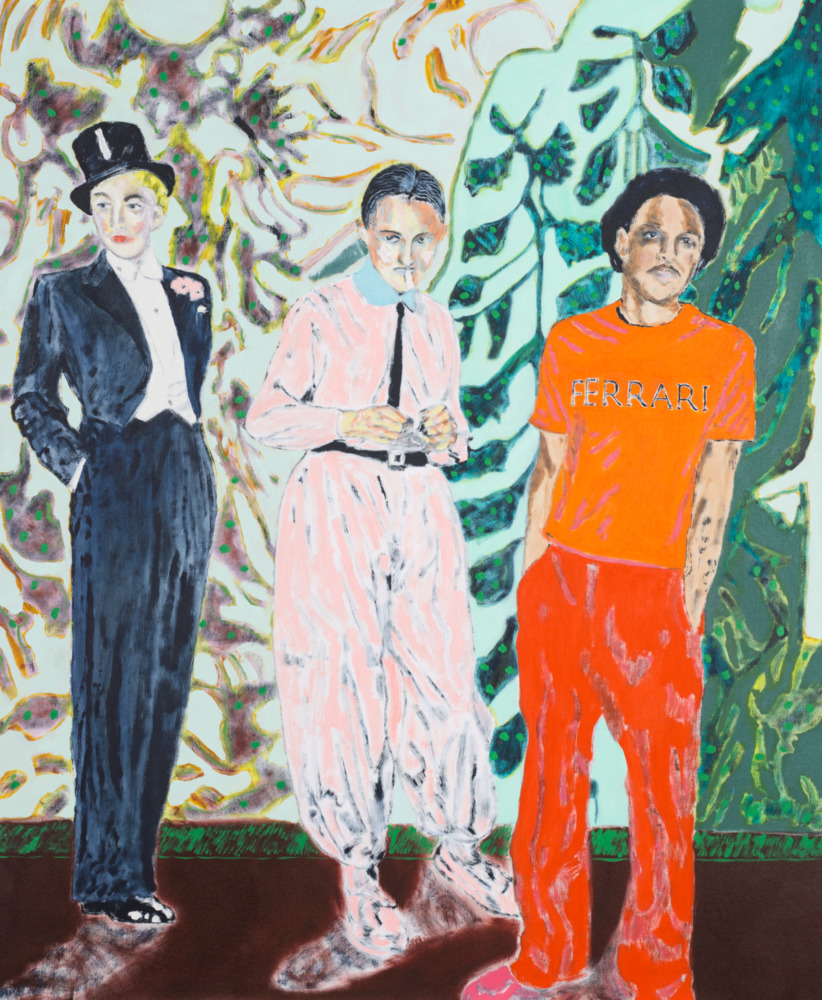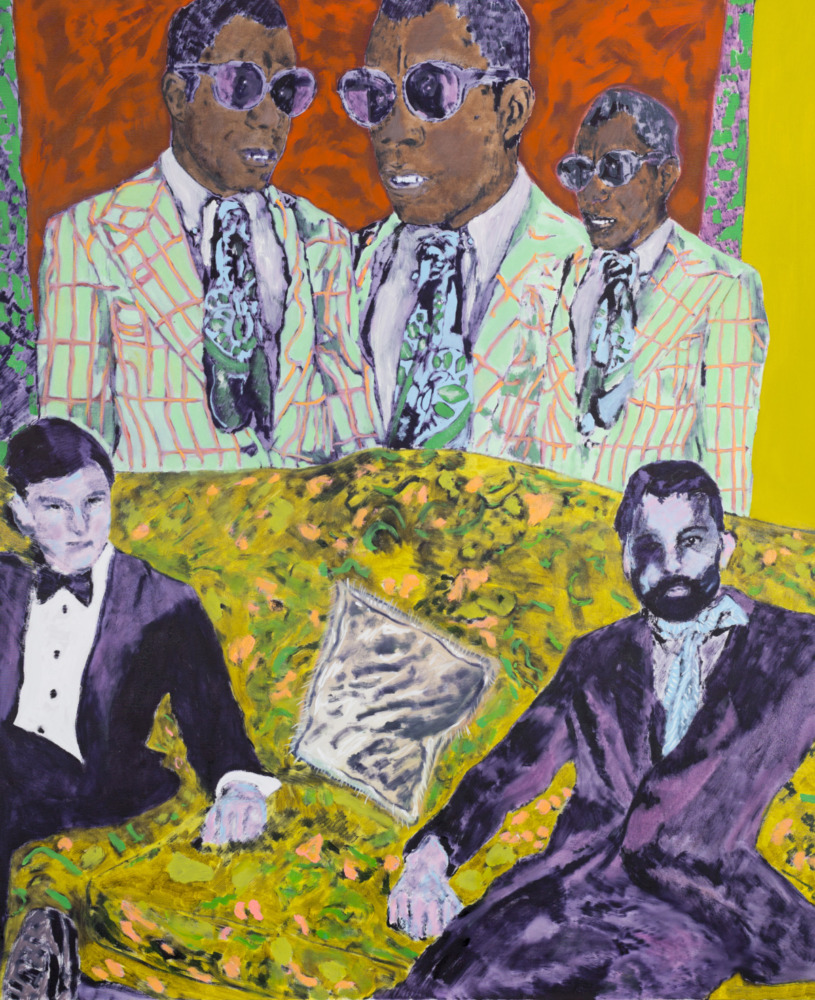
In a 2005 interview, architect Oscar Niemeyer confessed, “I prefer to think like André Malraux, who said, ‘I keep inside myself, in my private museum, everything I have seen and loved in my life.’” Artist John Brooks, in his second solo show with Moremen Gallery, appears to share Niemeyer’s affinities. We All Come and Go Unknown, on view until August 21, 2021, includes nearly two dozen oil paintings that teem with references to beloved cities, films, novels, artists, actors and friends from Brooks’ global queer community.
The most captivating of the paintings are the largest, which give Brooks ample space to create impossible meetings of contemporary and historical figures. In Mind Over Matter is Magic, Marlene Dietrich, dressed in tuxedo and top hat, poses assuredly next to Helene Abelen (modeled after August Sander’s 1926 photograph of the painter’s wife); to their right is a swarthy young man in screaming red pants and an orange Ferrari shirt. Like Dietrich, he stands with his hands in his pockets, hip cocked in a classic pose of effortless cool. Brook’s brushstrokes are soft and hurried, and the lack of detailed work adds to the scene’s fleeting, dream-like quality.
James Baldwin appears as a tripled apparition in An Irrevocable Condition, wearing sunglasses, a plaid suit and paisley tie as he hovers just above or behind (perspective isn’t a priority for Brooks) two suave and handsome men relaxing on an ornate sofa. The palette is slightly unnerving: acrid yellow, citron, olive and lime dominate, with pale corals and teals that recall a Florida beachside cliche abutting swaths of harsh red-orange and crimson. The deep indigos of the seated men’s suiting and the brown and black of Baldwin’s skin and hair offer small respites from the surrounding shock of color. Yet the piece retains a spirit of welcoming, the men’s demure gazes and casual postures inviting us to take a seat in the open space between them. The gay man and the Black man both struggle for liberation, but here in the dreamworld of painting, they can luxuriate in safety and sartorial splendor.

The pop singer Nick Jonas makes an appearance in no less than three paintings, injecting a wry sort of humor and serving as a symbol of a younger generation’s comfort with more ambiguous notions of sexuality and masculinity. His presence is most arresting in the show’s titular work, which depicts the musician in a violet tunic against a lavender sky and green triangular trees taken from a 1921 woodcut by Karl Schmidt Rottluff. Beside him sit two straw-colored poodles, one directing a languid eye at the viewer and the other with its head arched back in a kind of barbaric yawp. Jonas stares somewhere off in the distance, his left eye and cheekbone obscured in shadow.
A poodle also features in Halsey Neck, perhaps the most powerful work in the show, and its least fantastic: there are no celebrities, no Old World night clubs, no art historical references. Within a spare landscape of grassy beach, the artist stands in a blue Speedo with a black poodle, alert and loyal, to his left. In the foreground, a naked man with his back to the viewer turns to regard us with the suggestion of suspicion. He is right to be guarded: this is not, after all, a painterly imagining of libertine 1930s Berlin, but real life that persists with real dangers for openly gay men. This is Brooks at his most vulnerable and honest, daring to share a beautifully personal moment from his own private museum.
We All Come and Go Unknown is on view at the Moremen Gallery through August 21.




